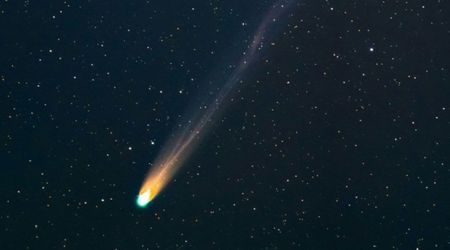When is the next total solar eclipse and where can you watch it?

While a total solar eclipse is considered by many to be even more stunning than the aurora borealis, residents of North America won't have the opportunity to see one without leaving the continent for quite some time. This remarkable astronomical occurrence involves the moon positioning itself directly between the Earth and the Sun, creating a shadow that momentarily obscures the Sun and darkens the sky, as mentioned on Accuweather.com.

To experience this incredible celestial event, precise geographic location, accurate timing, and clear skies are all essential. The fleeting nature of a total solar eclipse, combined with its strict viewing requirements, adds to its unique and unforgettable appeal for those fortunate enough to be in the right place at the right moment. On April 8, 2024, a significant total solar eclipse occurred, providing a stunning display for millions of people throughout Mexico, the United States, and Canada. This marked the most recent opportunity for those regions to witness such a brilliant celestial phenomenon. While another total solar eclipse is due soon, on August 12, 2026, it will not be visible from North America. Instead, this upcoming alignment of the Sun, Moon, and Earth will create a total eclipse observable across western Iceland, northern Spain, the Balearic Islands, and a largely uninhabited area of eastern Greenland.
As the 2026 total solar eclipse will bypass North America, it's worth noting that a significant partial solar eclipse will still be visible across most of western and northern Europe, offering an impressive celestial display shortly before sunset, assuming clear skies. Additionally, a partial eclipse will also be observable in Canada, Alaska, and the northeastern US, though this spectacle is expected to be less dramatic than the European viewing. For those in the United States yearning for another total eclipse, a considerable wait is in store. It will be almost a decade before the US witnesses another total solar eclipse, with the next one occurring in northern Alaska on March 30, 2033. However, residents of the contiguous 48 states will need to wait even longer, until August 23, 2044, for their next chance. Following that, a remarkable cross-country eclipse, akin to the one in 2017, is projected for August 12, 2045, stretching from California to Florida.
Following the anticipation of future eclipses, new research reveals that it's not just animals that react to the sky's sudden darkening during a solar eclipse; trees also demonstrate a response, potentially even sensing the impending event. This fascinating discovery is detailed in a paper published in the Royal Society of Open Science on April 30, which introduces what authors Alessandro Chiolerio and Monica Gagliano term "bioelectrical synchronization," as mentioned on Accuweather.com.

Their research involved placing sensors on spruce trees in northern Italy to monitor their natural electrical signals during the October 25, 2022, solar eclipse. These bioelectrical impulses, which are fundamental to all living organisms, play crucial roles in trees, governing processes such as water flow, growth, and even communication within the plant itself. Remarkably, the trees didn't just respond during the eclipse itself; they exhibited changes in their electrical signals hours before the event began. As the eclipse drew nearer, all three spruce trees, despite their varying ages and locations, started to electrically synchronize, hinting at an unexpected level of responsiveness to celestial phenomena.









